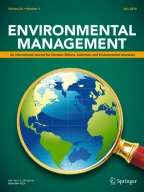Abstract
Lake Taihu is the third largest freshwater lake in China. It serves many social, economic, and ecological purposes in the drainage basin. Unfortunately, the water has been heavily polluted due to rapid industrialization and urbanization during the last two decades. Notwithstanding great efforts made so far to improve the water quality, the environmental situation is still far from being optimistic. The basin and the lake are facing a range of severe environmental challenges: rapid socio-economic development continues to place great pressures on the environment, current pollution control projects have many problems from the viewpoint of effectiveness and efficiency of their implementations, and the non-point sources of pollution such as agricultural fields, for which control is more difficult than for industrial point sources, have become the main contributors to serious eutrophication of the lake. Considering the characteristics of the environmental challenges and problems confronting the basin and the lake, we focus on integrated environmental management (IEM) as a promising and effective approach to overcome these predicaments. Current practices and problems of environmental management in the basin are examined, and potential future developments are discussed. Three aspects of the IEM are emphasized: institutional cooperation, public participation, and internalization of environmental externalities. We think these are the most critical for not only the basin but also for the whole of China to achieve a sustainable society.
Similar content being viewed by others
Literature Cited
Antunes P., R. Santos. 1999. Integrated envcv ironmental management of the oceans. Ecological Economics 31:215–226
Argent R. M., R. B. Grayson, S. A. Ewing. 1999. Integrated models for environmental management: issues of process and design. Environmental International 25:693–699
Bewket W., G. Sterk. 2002. Farmers’ participation in soil and water conservation activities in the Chemoga watershed, Blue Nile Basin, Ethiopia. Land Degradation and Development 13:189–200
Chen H. S. 1999. Tough tasks remaining in the pollution control for the Lake Taihu. China Water Resources 3:15–20
EEA. 1999. Environment in the European Union at the turn of the century. Environmental Assessment Report No. 2. EEA Copenhagen, Denmark
EEA 2002. Information for improving Europe’s environment: An introduction to the European Environment Agency. EEA Copenhagen, Denmark, pp 17–19
Ewert A. W., D. C. Baker, G. C. Bissix. 2004. Integrated Resource and Environmental Management.p.6. CABI Publishing, CAB International, Cambridge, MA
Gbadegesin A., O. Ayileka. 2000. Avoiding the mistakes of the past: towards a community oriented management strategy for the proposed National Park in Abuja-Nigeria. Land Use Policy 17:89–100
Lin Y. 1999. Achievements of the integrated pollution control on the Lake Taihu. Report in the Guangming Daily (a Chinese official newspaper), Jan. 1, 1999, p. 1
Liu B. 2003. Water rights in China. Proceedings of International working conference on water rights. 12–15 February 2003. Hanoi, Vietnam
Margerum R. D. 1999. Integrated environmental management: lessons form the Trinity Inlet Management Program. Land Use Policy 16:179–190
MWR. 2001. General situations in Lake Taihu Basin. Department of Planning and Programming, Ministry of Water Resources of China. (http://www.ghjh.mwr.gov.cn/gaikuang/ article_th_gk_2000.asp )
Pretty J. N., P. Shah. 1997. Making soil and water conservation sustainable: From coercion and control to partnerships and participation. Land Degradation and Development 8:39–58
Qin B. Q., L. C. Luo. 2004. Changes in eco-environment and causes for Lake Taihu, China. Quaternary Science 24(5):561–568
Schwartz J. 2003. The impact of state capacity on enforcement of environmental policies: The case of China. The Journal of Environment and Development 12:50–81
SEPA. 2004. Report on the State of the Environment in China 2003. Environmental Information Center, State Environmental Protection Administration (SEPA) of China, Beijing
State Council. 2001. The National Tenth Five-Year Plan on Water Pollution Prevention and Control for the Tai Lake Basin, issued by The State Council of China, Beijing
Thomas P. R. 1996. Integrated environmental management. Pages 394–396 in Proceedings of 22nd WEDC Conference: Reaching the unreached: Challenges for the 21st century. New Delhi, India
Yan P., J. Stover. 1999. Water pricing issues and potential legal reforms in China. Sinosphere 2:31–34
Yang G. S., D. J. Wang. 2003. Tai Lake Basin: economic development, water environment and water disasters. Science Press, Beijing
Author information
Authors and Affiliations
Corresponding author
Rights and permissions
About this article
Cite this article
Wang, Q., Gu, G. & Higano, Y. Toward Integrated Environmental Management for Challenges in Water Environmental Protection of Lake Taihu Basin in China. Environmental Management 37, 579–588 (2006). https://doi.org/10.1007/s00267-004-0347-8
Published:
Issue Date:
DOI: https://doi.org/10.1007/s00267-004-0347-8
